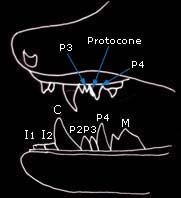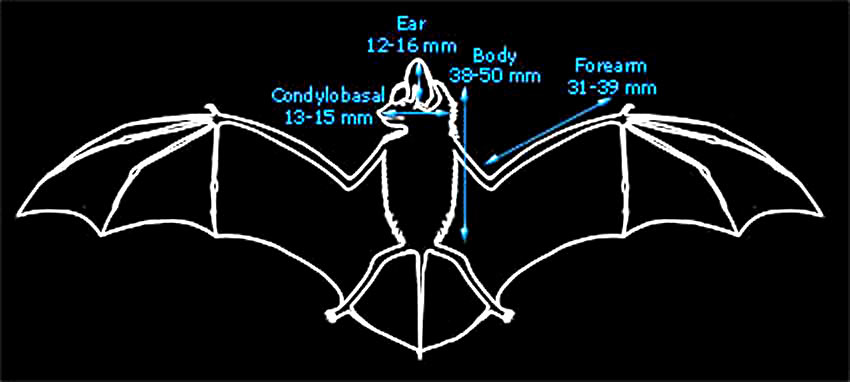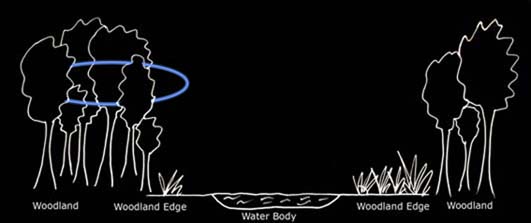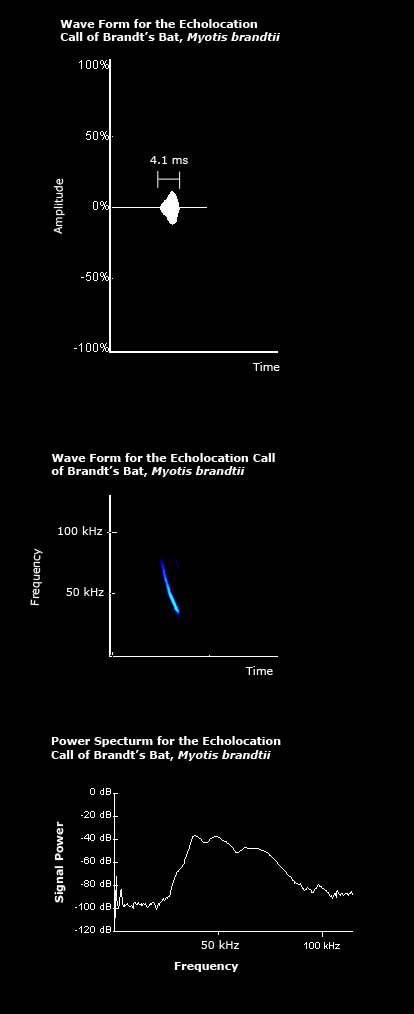Morphological Description
Life History
Distribution
Habitat
Roost Sites and Roosting Patterns
Emergence and Flight Pattern
Foraging Behaviour
Echolocation Calls
Status and Protection |
|
|
Morphological Description

- Dorsal fur is grey-brown with red-brown tips. Ventral fur may be very pale and ranges from dingy white to yellow-grey.
- Fur is thick, long and dishevelled.
- Juveniles up to 12 months are dark grey and look very similar to whiskered bats.
- Brandt's and whiskered bats are extremely similar and therefore easily confused. The teeth can be used to distinguish the two species. On the lower jaw of Brandt's bats the third premolar (P3) is greater than half the size of the second premolar (P2). On the upper jaw the protocone of P4 is large and taller than P3 (see diagram on left).
- Adult male Brandt's bats have a club-shaped penis while the whiskered bat has a thinner parallel-sided penis.
- Average weight (as given by Greenaway & Hutson, 1990) 4.5-9.5 g.
The diagram below gives important average body measurements for Brandt's bats (Greenaway & Hutson, 1990).
|

Back to top |
Life History
- Mate in autumn, including hibernation period.
- In Europe a single young is born between mid-June and mid-July (Schober & Grimmberger, 1989).
- Maximum age recorded in Europe is 19 years 8 months (Schober & Grimmberger, 1989).
Back to top
|
Distribution |
|
|
 |
| The British and World distributions are shown by the white areas of the maps above (as given by Richardson, 2000 and Corbet & Harris, 1991 respectively). |
|
There is some uncertainty over the distribution of Brandt's bats because they are not easily distinguished from whiskered bats. Currently Brandt's bats are thought to be widespread throughout England and Wales and especially common in north and west England.
Back to top
|
Habitat |
|
• Woodland and hedgerows, often near bodies of water.
• The photograph on the left shows a typical habitat of Brandt's bats.
|
| Roost Sites and Patterns |
- Summer roosts: In Europe nursery roosts are found from May and usually contain 20-60 females (Schober & Grimmberger, 1989). Mainly roost in buildings (preferentially old buildings), possibly also in trees.
- Winter roosts: Found in crevices in colder regions of caves (often near the entrance) from October to February/March. Brandt's bats are either solitary or found in small groups over winter. May from larger aggregations with other species.
- Occasionally found in bat boxes.
- It is often very difficult to distinguish Whiskered and Brandt's bats, a problem which is exacerbated by the fact that both species often share roosts. Both whiskered and Brandt's bats have been found to show little or no difference in humidity and temperature requirements during hibernation, and the flight morphology of both species is remarkably similar (Jones, 1991).
Back to top
|
Emergence and Flight Pattern |
- Emerges in the early evening.
- Flight is rapid and agile.
Fast turns can be made in the open.
Back to top
|
Foraging Behaviour |
| Forages
at low-medium height in
woodland and over water.
The diet of Brandt's bats mainly consists of Diptera,
particularly the suborder Brachycera (Vaughan, 1997).
Brachycerans are predominantly diurnal and so are probably gleaned from surfaces. Arachnida are also taken by gleaning.
|
 |
|
Marked in blue on the diagram above is a typical foraging path of Brandt's bats (based on Russ, 1999).
Back to top
|
Echolocation Calls |
|
|
 |
The echolocation call of Brandt's bats is frequency modulated. |
|
To listen to the call of the Brandt's bat click here
Size of sound file: 18.4 KB
|

|
| For details of how the echolocation calls were recorded click here. |
|
Average values for a Brandt's bat echolocation call, as given by Vaughan et al. (1997), are listed below:
Interpulse interval: 86.2 ms
Call duration: 4.7 ms
Minimum frequency: 41.0kHz
Maximum frequency: 64.4kHz
The spectrogram on the left shows clear frequency modulation, with the call beginning at high frequency and ending at a lower frequency.
The power spectrum on the left shows that the maximum power of the call is at a frequency of approximately 45 kHz.
|
Back to top
|
|
| Status and Protection
• The pre-breeding population was estimated at 30,000 in 1995 (22,500 in England , 500 in Scotland , 7000 in Wales ) (Harris et al., 1995).
• Brandt's bats are at low risk of extinction worldwide (IUCN status, 2001).
• Bat boxes should be put up in suitable habitats to conserve existing populations.
Back to top
|
 © School of Biological Sciences, University of Bristol 2005. Last modified 24th February 2005. © School of Biological Sciences, University of Bristol 2005. Last modified 24th February 2005. |





 © School of Biological Sciences, University of Bristol 2005. Last modified 24th February 2005.
© School of Biological Sciences, University of Bristol 2005. Last modified 24th February 2005.